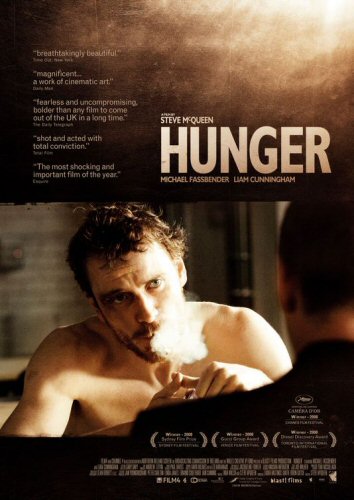For the first three days of this week we were quite excited to know that Richard Smith, our screenwriting teacher was back from living it up in LA to teach us for three intensive days. This was quite exciting as we had all recently submitted scripts to him and were looking forward to getting back into the writing classes as well as hearing feedback on our scripts.

Monday morning started in the traditional AGOS 9 where Richard eagerly awaited our arrival. The first exercise we had to do was simply to warm up our writing muscles so we did the statue game where a couple of people of the class stand up at the front and are arranged in a certain way. The rest of us then have to create a story around these muses. After this we revised all that we had covered before Christmas to refresh our memories on things like three-act structure, theme and character. After lunch we then had the opportunity to do an entirely new exercise which Richard promised we would enjoy. He had prepared sheets of paper for each of us with sixteen stages of a story on it but each of the stages was blank. We had to all sit in a circle and each fill in one stage of the story and pass the sheet to our left then fill in the next part of the story and so on. At the time this exercise was undertaken very seriously and strategically and after all the sheets were eventually filled in, Richard decided we should hear a couple to see where some of the stories went. Sitting on the end of the row, I had to read out the first story which, when reading it out just made us all realise how funny all the stories had become. And so, after we all agreed that we should hear what happened in every story, we went round the class and everyone read out the story they had in front of them. Almost every time the stories became more absurd and extremely funny ranging from a woman who breaks her leg and ends up in hospital to a claustrophobic submarine driver. It was at this point that Richard probably questioned that we were some of Scotland's best potential writers and wished he had stayed in his beach house in Santa Monica. After a crash course in visual storytelling and then symbolism that was us done for the day.
Tuesday's writing class began with us sharing two brand new premises we had come up with the previous night. After the usual process of going round the group twice, we managed to devise a shortlist of premises that could potentially be made into good short films. The ideas were then put under the microscope and it turned out that they might not be as simple to write scripts on as was first thought. After this we learned more about the essentials of writing, specifically focusing on character and dialogue. For character we had to do some simple but interesting exercises where we saw a photo of a person and we had to answer questions about them such as what the contents of their fridge was and what type of underwear they wear. This turned out to be quite stereotypical for a lot of it although there were some interesting results. As for dialogue we watched a couple of excerpts from films then discussed all the technicalities of dialogue. Visual storytelling was a main factor that we concentrated on which was really interesting because people automatically assume that a "script" should have dialogue and lines for actors etc. but in fact visual storytelling is very important and often much more effective. It was here that I really wanted Richard to just say "Okay you can go and re-draft your scripts," because with all this new knowledge it made me slightly less excited to have the script feedback tutorial. And yes, I now understand why Andy had showed us all these silent films.
A slightly strange task was set for our homework for Wednesday. We had to come up with three things that we don't like or would change about ourselves. Any other uni course and you would probably be questioning this but anything goes in screenwriting and this turned out to be quite mild compared to the day with the post-secrets and beliefs. So after going round the group three times and sitting in a nice wee circle listening to each other's flaws, we treated ourselves with some chocolate and cookies. After this we watched a short excerpt from some weird but classic horror/thriller film which led us nicely into learning about conflict and tension in a story. After this we arranged our tutorial times for later in the day so that Richard could give us feedback on our scripts. In between this I went to see Up in the air - the quickly released sequel to Pixar's latest phenomenon - with some of the others at Cineworld. My tutorial with Richard was quite good. It was fairly short and he didn't give a great deal of in depth feedback but we both agreed on the points that were good and the points that could have been improved on. Later on, I saw the film Brothers at Cineworld with Murray and Sam which, despite what Sam says I thought it was quite good.
On Thursday, we continued with the intensive week of writing with a visit by the BBC producer and writer John York. I found this class to be quite good and even though it was very fast paced because he was cramming a lot of information in, it was interesting and informative. A lot of the things we already knew from our work with Richard about three-act structure and the like but he told us a lot of other things like the five-act structure. In the afternoon we then had two history of cinema classes crammed into one and Andy had our attention from the off by telling us that if we remember anything from our three years in the academy we should remember this if we ever make films. We're up to the Russian Revolution kind of era in this class and we learned about the Kuleshov effect which I found quite interesting. This consisted of the Russian film maker, Lev Kuleshov, filming an actor looking at different objects such as a bowl of soup, a dead child and the Soviet flag. Each time the actor would have the exact same passive expression. However, when the audience saw the different clips they thought that the actor was very skilled. This experiment then revealed that the audience will actually feed in their own emotions to a film which I think was the main message that Andy wanted us to learn. The audience will provide their own context for a film, they don't need to be told everything and in fact often like it when they have to make an effort to add their own details even if it is subconsciously.
Friday started off with another screening of Charlie Chaplin in one of his final movies City Lights. Talking pictures had already started and Chaplin, refusing to bring the little tramp into talking movies, stopped his movie career not long afterwards. I think out of the three Chaplin films we have watched so far, this was definitely my favourite. The story was really lovely and engaging and of course there were some greatly funny moments in it as well. And the score of course was really good, especially compared with the likes of Battleship Potemkin. Fair play to Chaplin, he was a bit of a legend.









































